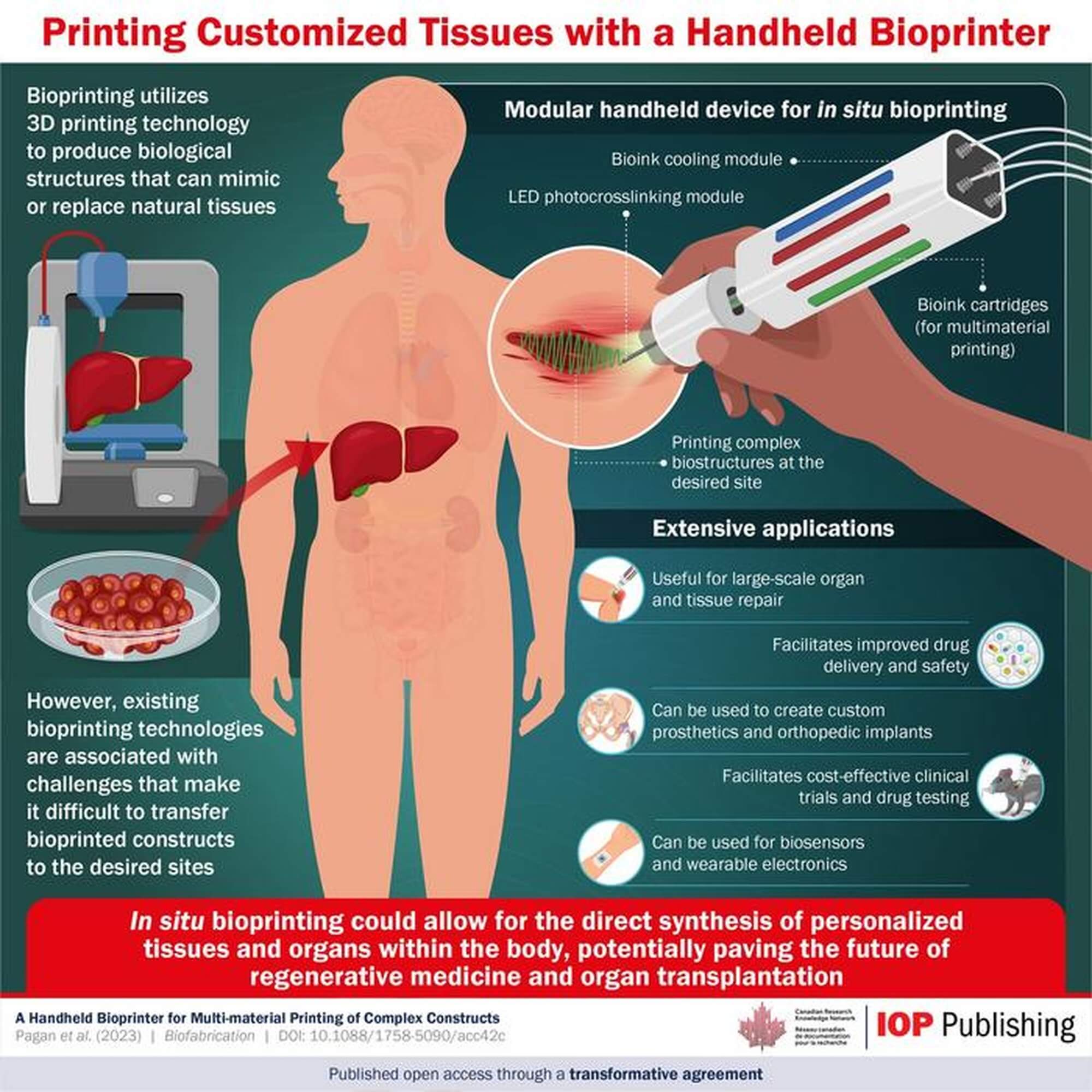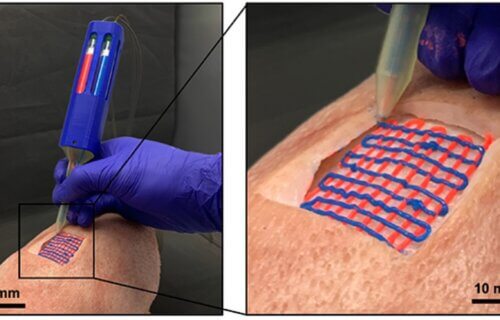VICTORIA, British Columbia — A medical tool that can regrow skin and repair organs is something many people probably think only exists in science-fiction shows. However, it could soon become reality. Scientists have developed a handheld bioprinter that brings modern medicine one step closer to printing functional tissues and organs directly within the human body.
This portable device overcomes the limitations of previous designs, allowing for the printing of multiple materials and precise control over the properties of the printed tissues. With its potential applications in regenerative medicine, drug development, and custom orthotics and prosthetics, this innovation is set to revolutionize healthcare.
Regenerative medicine has made remarkable strides in improving patients’ lives by repairing or regenerating damaged tissues and organs. On-site bioprinting, an extension of 3D printing technology, takes this advancement even further by enabling the synthesis of tissues and organs right inside the body. This approach offers hope for addressing challenges such as the scarcity of organ donors and the risks associated with transplantation.
However, current in situ bioprinting technologies have their limitations. Some devices can only work with specific types of bio ink, while others can only create small patches of tissue at a time. Additionally, the complex designs of these devices make them costly and limit their practical applications.
The research team, including Erik Pagan and Associate Professor Mohsen Akbari from the University of Victoria in Canada, developed a handheld on-site bioprinter with a convenient modular design, that allows the printing of complex biocompatible structures. Akbari’s personal experience with breast cancer motivated him to explore the potential of handheld bioprinting for breast reconstruction and tumor modeling in cancer research.
“Two decades ago, my mother was diagnosed with breast cancer, which eventually led to the removal of her breast. This affected her well-being considerably. It made me realize that a technology like handheld bioprinting could not only help develop personalized implants for breast reconstruction that match the shape and size of the patient’s tissue, but also be used to create tumor models for the study of breast cancer biology,” says Akbari in a media release. “Such applications could significantly improve treatment outcomes for affected patients.”
The standout feature of this handheld device is its multiple bio ink cartridges, each controlled independently by a pneumatic system. This level of control empowers operators to develop structures with the desired properties. The device also includes a cooling module and a light-emitting diode photocuring module, adding further control and versatility.

The potential applications of this handheld bioprinter are vast. It can be used to repair large defects caused by trauma, surgery, or cancer, enabling the creation of large-scale tissue constructs. In the long run, this technology may eliminate the need for organ donors and reduce the risks associated with transplantation, offering patients longer and healthier lives.
Another exciting application is in the production of drug delivery systems. The device allows operators to construct scaffolds or structures that release precise quantities of drugs and cells at specific locations in the body. This targeted drug delivery enhances drug efficiency, minimizes side-effects, and improves overall safety. Additionally, this technology can accelerate the discovery of new drugs by enabling the development of more accurate testing models.
Furthermore, this handheld bioprinter holds promise in developing custom prosthetics and orthopedic implants. Its portability enables physicians to match a patient’s tissue anatomy with greater accuracy and convenience, resulting in improved functionality and aesthetics of the bioprinted constructs.
With the introduction of this handheld bioprinter, we are witnessing a significant leap forward in the field of regenerative medicine. The ability to print functional tissues and organs within the body opens up a world of possibilities for personalized healthcare solutions. As researchers and healthcare professionals continue to explore the potential of in situ bioprinting, we can anticipate transformative advancements in the future of medicine.
The study is published in the journal Biofabrication.
You might also be interested in:
- New robot can 3D print biomaterials inside human body without major surgery
- Algae brain implants could help regenerate tissue — curing epilepsy
- Reversing hearing loss closer to reality after scientists learn to regenerate cells

